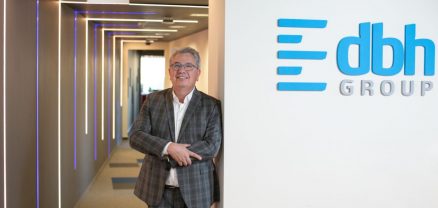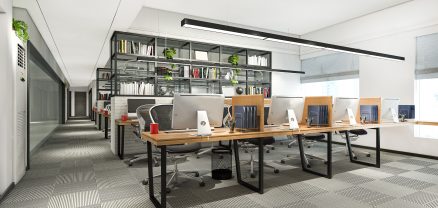The Art of Office Space: How Your Choice Impacts Productivity and Creativity
The working environment plays a pivotal role in shaping productivity and fostering creativity of employees. Among the myriad options available, serviced offices emerge as a strategic office choice for businesses aiming to strike the perfect balance between functionality and inspiration.
How do the flexible design options and inclusive services of shared offices contribute to supporting focused work and ensuring employees remain inspired, motivated, and creative?
Aesthetic Choices
A study shows that the performance of an organization could experience fluctuations of up to 15% in revenue, which may be linked to factors related to the design and utilization of the office environment. Modern and minimalist design reduces visual clutter, promoting a clean and organized workspace that minimizes distractions and enhances focus.
Unlike traditional office spaces, where the design is often one-size-fits-all, serviced offices provide a canvas for personalization. Businesses can choose from a range of design options, from color schemes to furniture styles, allowing them to create an environment that reflects their brand culture. This approach helps to create a sense of belonging and a motivational atmosphere, encouraging increased focus and dedication to work.
Supportive Design
Serviced offices are designed with flexibility in mind. The layout and aesthetics of shared offices are supportive of various work styles as the design extends to amenities that enhance productivity. Ergonomically designed furniture, integrated technology solutions, and strategically placed break-out areas contribute to an overall workspace that not only looks appealing but also functions seamlessly to meet the diverse needs of businesses.
Comfort
A comfortable workspace is a key factor in overall job satisfaction. When individuals feel physically at ease, it positively influences their mental well-being, reducing stress and creating a foundation for increased productivity.
On the other hand, when employees are content with their work environment, they are more likely to stay with their current employer. A study published in the “Journal of Environmental Psychology” shows that improved workplace environmental conditions, including comfort factors, were associated with higher levels of employee satisfaction. High employee satisfaction and retention rates are directly linked to increased productivity, as a stable workforce leads to a more experienced and efficient team.
Community
Shared office spaces cultivate a professional community where businesses of various sizes and industries coexist, providing opportunities for networking, collaboration, and the exchange of creative concepts.
The communal areas, strategically designed within serviced offices, become hubs of activity where meetups can evolve into collaborations, sparking solutions that may not have emerged in a more isolated work environment.
Collaborative Spaces
The flexible layout of serviced offices facilitates spontaneous collaboration, creating opportunities for brainstorming sessions and impromptu meetings that nurture creative ideas.
Moreover, serviced offices often provide access to well-equipped meeting and event spaces. This availability encourages businesses to host workshops, seminars, and collaborative sessions, fostering an environment conducive to knowledge-sharing and creative exploration.
Personalized Solutions
In the context of serviced offices, businesses have the opportunity to tailor their workspace to align with their brand identity and values.
Customized offerings go beyond the conventional one-size-fits-all approach, creating an environment that recognizes the unique needs of each business or individual. Whether a team prefers an open, collaborative layout or individual offices for focused work, the flexibility to customize the workspace fosters an environment that supports diverse working styles. This tailored approach promotes individual comfort, directly contributing to increased productivity.
Less Administration, More Focus
With administrative tasks handled by the serviced office management, professionals can focus more on their core work, reducing the administrative burden and allowing for a more concentrated effort on creative projects.
Conclusion
As businesses strive for excellence, the relationship between productivity and creativity emerges as a key differentiator. Productivity ensures efficient execution, while creativity fuels problem-solving and innovative solutions, creating a harmonious synergy essential for sustained growth and competitiveness.
Don’t stop at the surface: Discover our blog about why office design matters more than ever?

Do not hesitate to contact us
Get in touch, if you have any question


